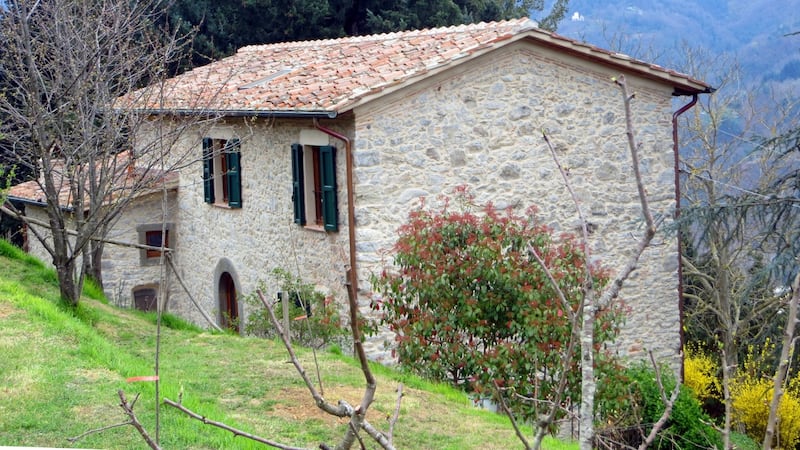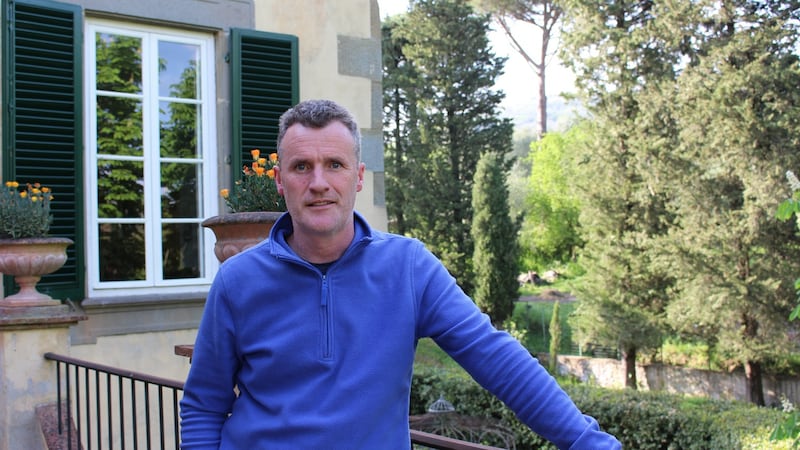The undulating tapestry of Tuscany has bewitched people into covetousness for years. Anyone who visits the verdant and luscious patchwork of fields, vineyards, olive groves and rolling hillsides sprinkled with picture-perfect stone houses, villages and castles feels the tug, the inner voice saying: "I want to live here, I want one of these idyllic farmhouses with my own olive grove and vineyard."
It is a dream that has turned into a nightmare for many people. Take the beautiful, striking 200-year old farmhouse that fell down a month after the deal closed, or the castle on the hillside for hundreds of years that was sliding off its perch. These are just two examples of the property nightmares that engineer and Cork man David Collins has seen in his work in Tuscany, where his company helps people buy and restore those idyllic properties.
“The Italians are masters at making things complicated, and in Tuscany it is even more complicated,” he says.


The rules that buyers and vendors need to be aware of are complex. You might see a lovely house down a country road on a hillside, but Collins will see a track that appears on the property map at 1.3 metres wide. That is not wide enough for your car, and means that you would be encroaching on someone else’s land to get to your prized home. That someone may and can come looking for you to pay for right of way or to purchase the required strip of land.
Seismic risk
The same hillside can be hiding a multitude of problems, such as subsidence and the fact that the house might not be seismic-strengthened. Yes, they get earthquake tremors in Tuscany and each commune has a seismic risk rating. Earthquake proofing can become a costly exercise.
Your plans to put a door here, a window there, a nice big patio out the front and a pool in the sunny backyard will be scuppered by the intricate planning regulations. Tuscany is beautiful because it has very restrictive rules.
In 1770 Ferdinando Morozzi, an engineer who had travelled the length and breadth of Tuscany wrote a practical manual for building farmhouses, Delle Case de' Contadini. Based on his observations, Morozzi recommended that living quarters should be upstairs, away from rising damp. The lower floors would be for animals, which would generate heat for the winter, and the cellars for curing hams and storing olive oil and produce.
The house should be south-facing and raised up on a hillside to enjoy drier air. Stone steps on the south-facing outside wall would keep the inside clean and stop slippery moss forming. The space under the steps would be ideal for fattening a pig. Morozzi’s volume was a feng shui manual for the region; its recommendations are still valid today and worth considering when buying in Tuscany.
Many people who are enchanted by a summer holiday in Tuscany would be surprised to hear that it can be very cold, wet and damp in winter. The temperature ranges from minus four to 40 degrees and roads can be closed by snow, a factor to remember when weatherproofing a house.
The property market in Tuscany is depressed and prices are the lowest they have been in years. New taxes on second homes are activating the market as people who have other properties through inheritance decide to sell. Houses that were €250,000 six years ago are now going for €150,000.
Bernard Wade and his wife, Gráinne, bought their first house in Tuscany in 2005 and another smaller property three years ago. Wade’s advice for anyone buying in Tuscany is: “Think carefully about budgets – where are the hidden costs? – and try not to be scared of taxes, which are very confusing but are not too expensive. However, you should not rush into buying the first property you see without the advice of someone like David Collins. We were burned badly restoring our first house.”
Collins’s company Our Toscana works with various professions to advise on restoration projects. Collins says no negotiations should be entered into until an initial survey is done. “In three hours, I can tell you what it might take 10 years to find out. In Tuscany, 70-80 per cent of properties have issues of some sort.”
Rules
As an engineer who has lived in Tuscany for 20 years and speaks Italian, Collins knows the rules and pitfalls for purchasers. Every week, he gets two to three calls from people in trouble. There can be huge legal issues, boundaries are a nightmare and subsidence is a big problem.
You may have plans to extend and alter your purchase into a dream home, but the regulations and compliance issues are daunting.
“Planning issues are like unravelling a plate of spaghetti, strand by stand,” Collins says. “As for the tax regulations, what is the cadastral value?”
This said, Collins always advises clients to consider carefully why they want to buy in Tuscany. If they are going to buy a big farmhouse with a swimming pool and use it for a month or two in summer, it is going to cost at least €8,000- €10,000 to maintain each year. He believes small apartments are good value and are a fine way to enjoy Tuscany.
And the house that fell down? The good news is that Collins and a team of professionals and tradesmen were able to reclaim most of the stonework and terracotta tiles, and some woodwork, and rebuild the woman’s dream identically but stronger than before.
David Collins's book, Buying and Restoring in Tuscany: A Practical Guide (€15) can be purchased at his website, ourtoscana.com, and as an ebook on Amazon. com.
Jessica and Thomas Felber host a blog called The Long Way Home at tlwh.me











